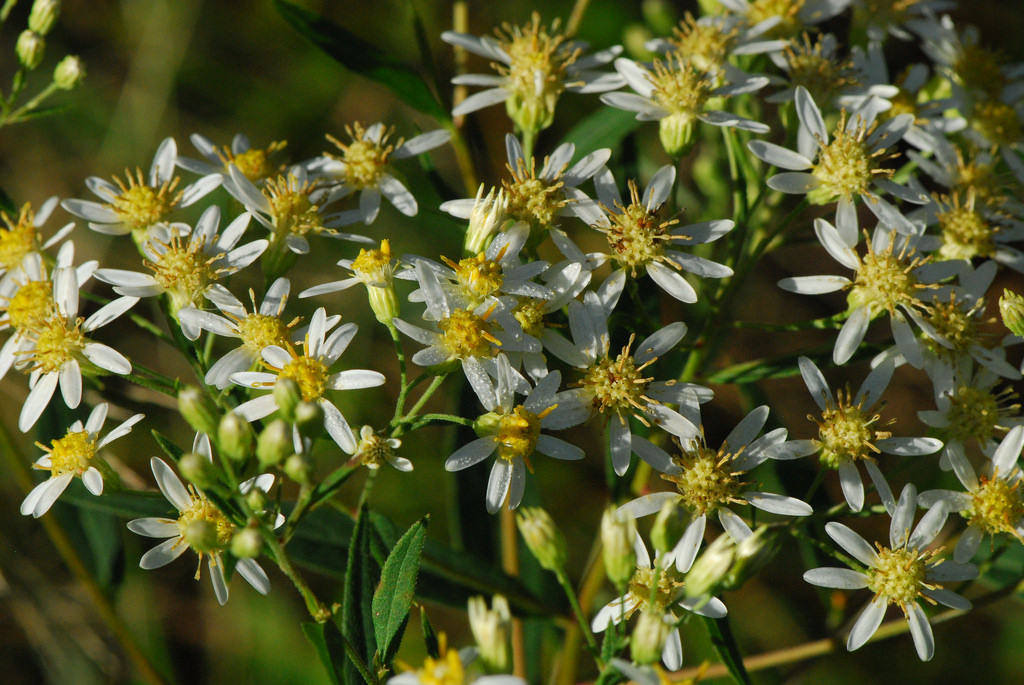Doellingeria umbellata
Flat Topped Aster is a wildflower species that typically grows about 1 m in height. The leaves are alternately arranged, dark green coloured, ascending and curved, lanceolate shaped, attached to the stems, have distinctive veins, and have entire margins. The flowers are small, have 5-12 white petals, have yellow disk centers which turn cream coloured, appear in flat branching clusters, and bloom between August and September. The flowers are beneficial to pollinator species, like bees and butterflies. The roots can useful for controlling erosion and stabilizing shorelines.Flat Topped Aster grows best in normal to moist conditions with full or partial sun exposure. It prefers well-drained, sand or loam soil types. It is tolerant to slightly acidic soil and periodically wet areas. This wildflower can be naturally found in open forests, forest edges, meadows and fields, around marshes, and along stream or lake shorelines.
Scientific Name: Doellingeria umbellata
Type: Ground Cover
Height: 1 m
Spread: 1 m
Moisture Level: moist
Light Conditions: full sun, part sun
Soil Conditions: clay, loam
Zone (Hardiness of Canada):

